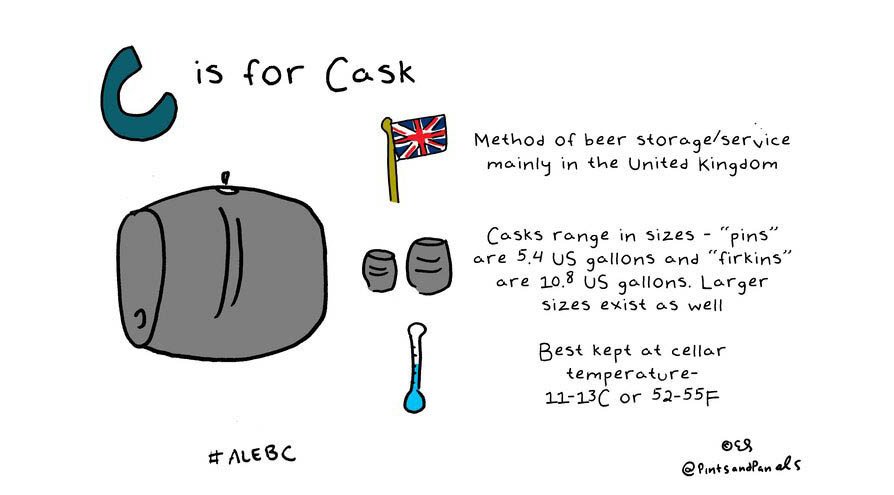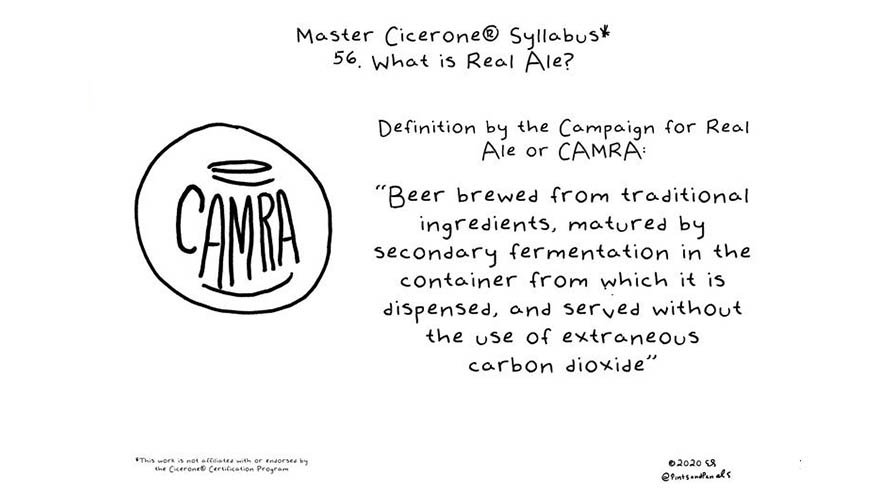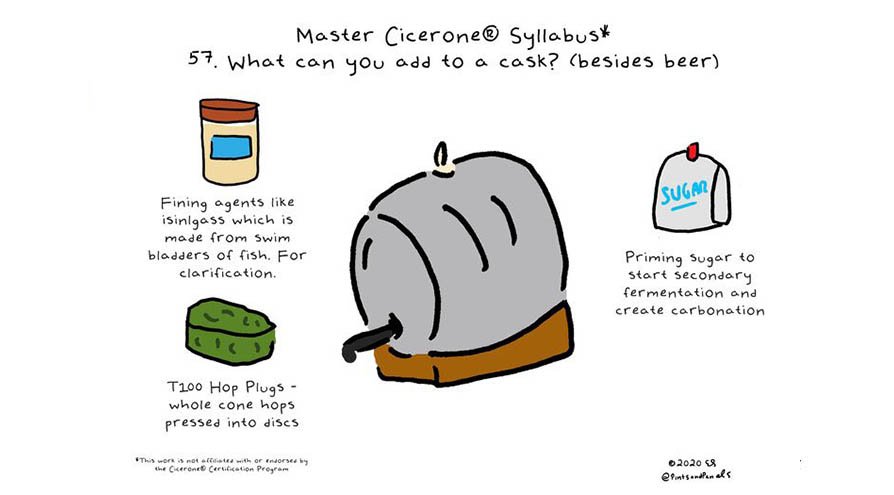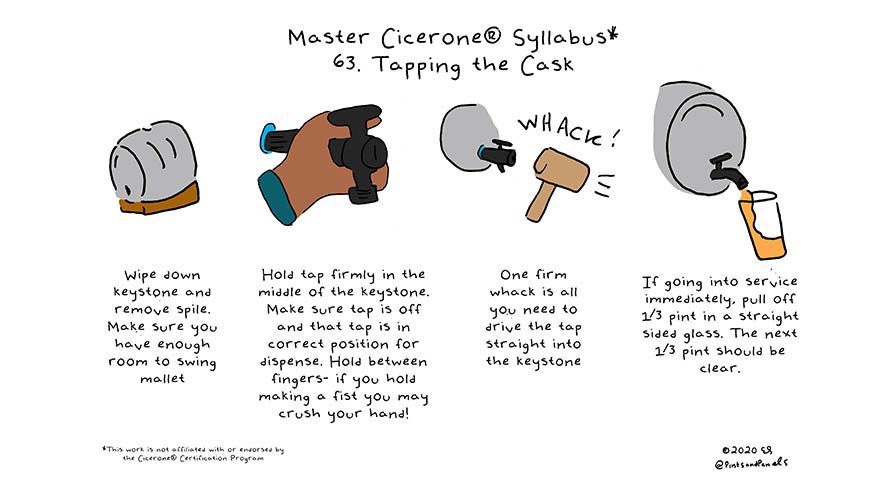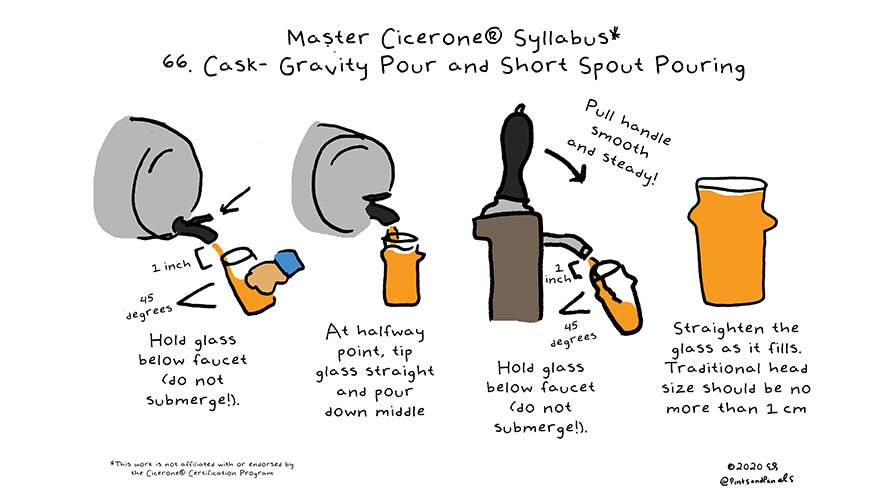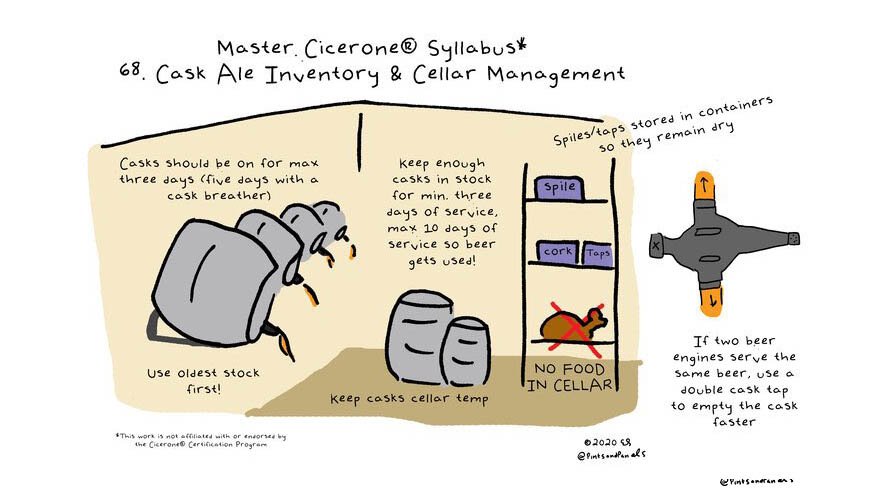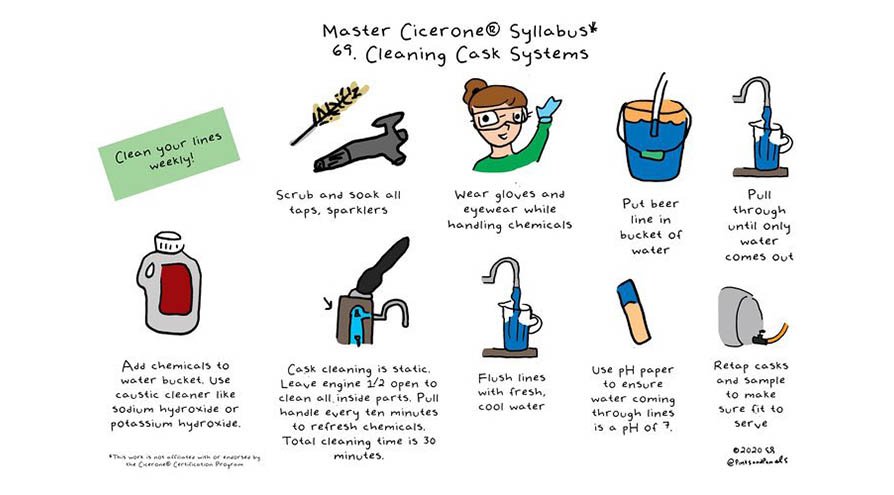Firkin FriYaY
Despite some of today’s largest breweries starting out with a focus on English-styles, these low-ABV, malt-driven recipes were abandoned during the last decade’s craft beer boom. Instead, this new era has been fueled by fruit-forward hop exploration, pushing boundaries, and extremes. In other words, the exact opposite of a Dark Mild, Bitter, or Brown Ale. But like lagers, these styles have a little momentum right now fueled by pandemic-related shifts, haze fatigue, and the desire to go against the grain. The opportunity is there for English-styles, they just need a little spark to be activated with today’s experience-seeking consumer.
Malt Backward
Along with pent up demand for travel heading into Spring, groups of friends are ready to make up for lost time and establish new rituals to celebrate, if nothing else, the end of the work week. Beer bars provide the perfect backdrop and community gathering place for these routine meetups and these establishments certainly deserve the attention after the last two years of hell.
While a well-curated lineup of great beers might be all it takes to drive business, adding a little programming, gamification or FOMO never hurts in driving loyalty, while attracting Craft Beer’s newer and most curious consumers. The industry’s aging demographic appears to have reached Max-Haze™, but that doesn’t mean the OG fans aren’t also motivated by something new, experimental, and experience-driven.
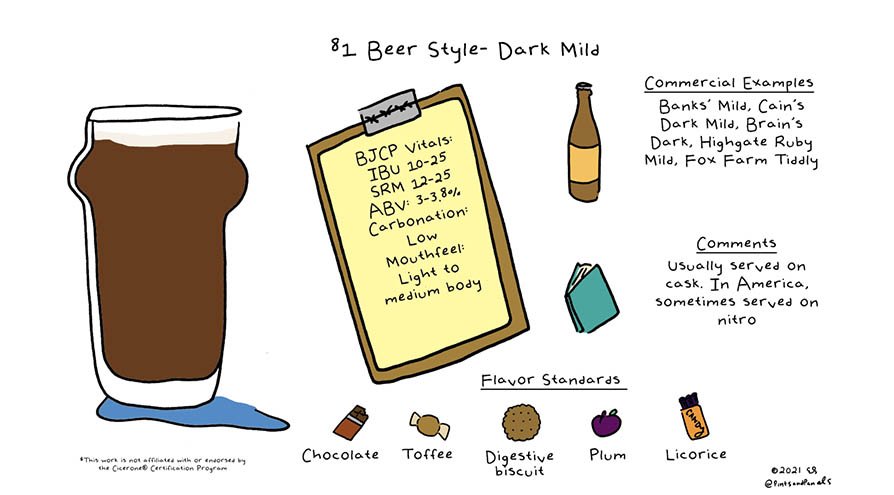
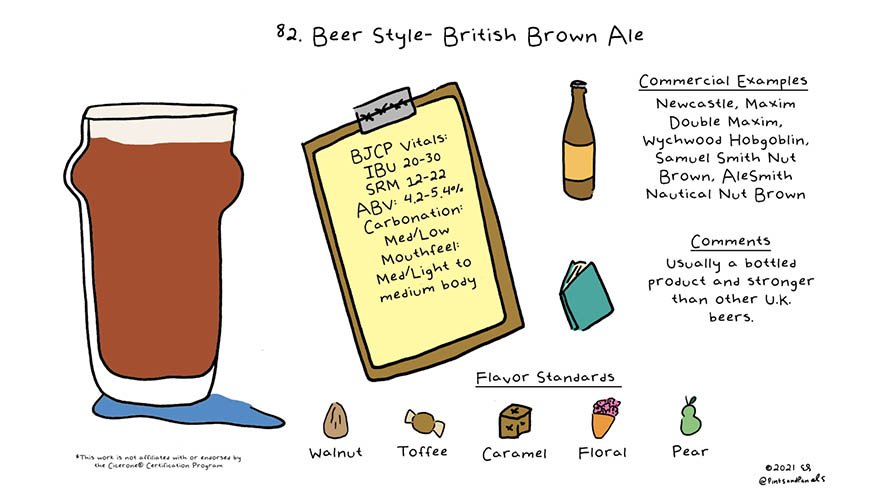
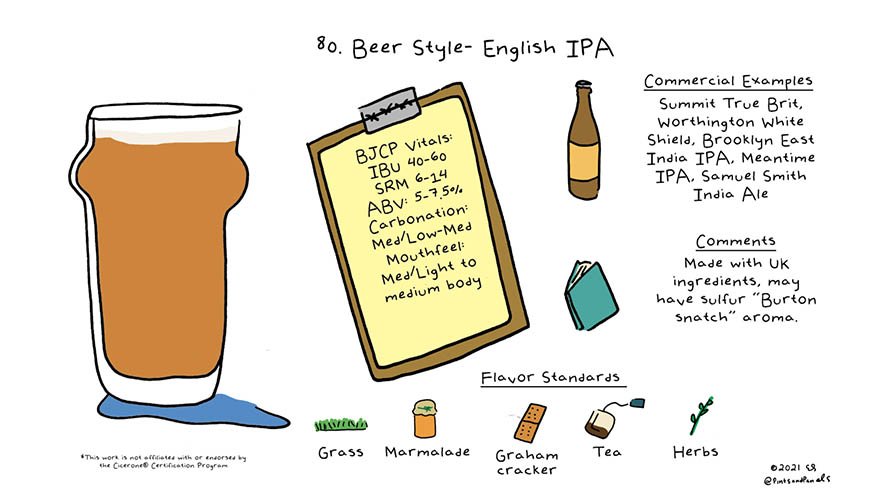
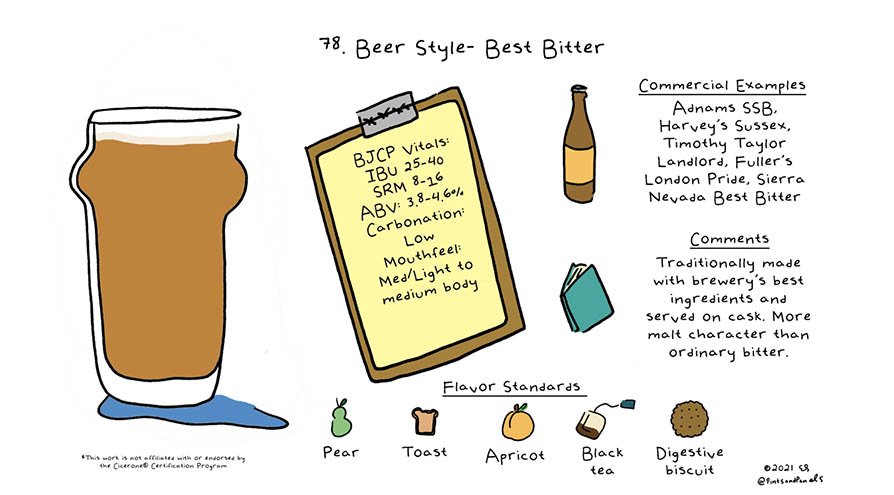
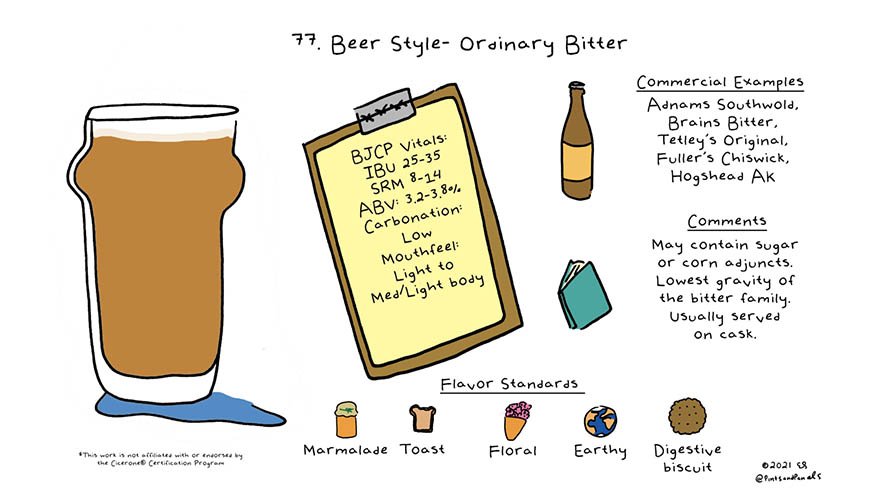
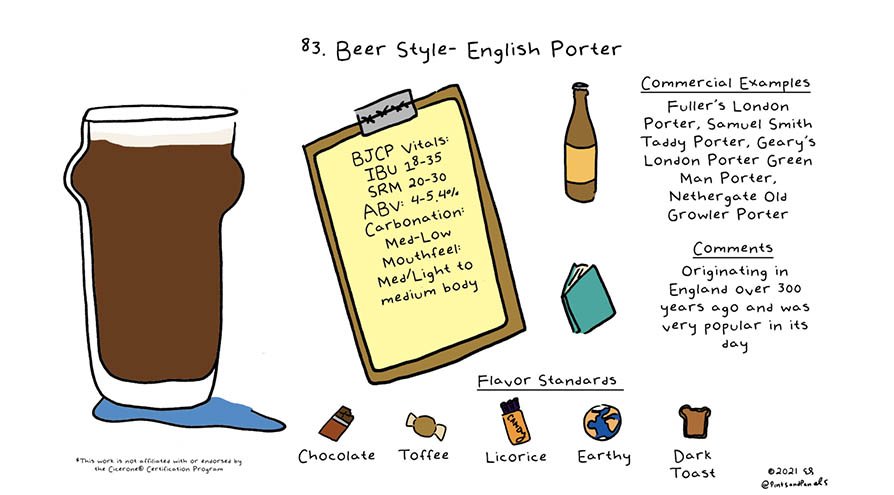
Cask programs are the perfect way to activate English-styles in the on-premise thanks in part to the wide open canvas they offer for one-off, adjunct combinations that allow them to rotate and stay new. Weekly releases pair perfectly with the joy of Friday afternoons, adding the old school sizzle needed to get people excited about English-styles again and support the year-round or seasonal options that I predict we’re about to see more of 🔮.
Malt-forward styles couldn’t compete with what was happening from 2013-2015 and became endangered species in the years that followed. However, exhaustion has begun to set in and peaks appear to have been reached, not for flavorful craft beer, but with pushing the limits beyond any semblance of balance or reason.
The “Barleywine is Life” movement, boasting over 5,000 members on Facebook, laid a strong blueprint beginning around 2017 for how a previously ridiculed English beer style could rise to prominence. These vocal, active, and influential beer fans saw the light and have been spreading the malty gospel ever since, often via MEME. Now most barrel programs in the country make at least one barrel-aged English Barleywine each year, if not many. This passionate fanbase is 5 years older now, and will likely be coming back down to earth for at least an occasional breath of fresh, low-ABV air. Converting dedicated barleywine fans into loyal, supportive fans of English Milds doesn’t sound too far-fetched, especially if the pitch feels updated.
Alex Kidd, creator of Don’t Drink Beer, co-host of the Malt Couture podcast, and instigator of the Barleywine is Life movement performing one of many sold out comedy shows titled “Barleywine is Live”.
Labor of Love
A successful cask program should have a broader goal in mind. For a brewery at least, it’s a pretty low risk experiment, cost-wise, to prepare a firkin or pin for their own Taproom. However, when you factor in the labor, communication, sales, logistics, and headaches, the margin on 1-5 firkins aren’t going to move any needles through distribution. That doesn’t mean there’s no business case however, so here’s how I rationalize the effort and coordination involved:
Well-made casks demonstrate the brewer’s chops and range, providing the opportunity to broaden their overall reputation
Supplying a loyal account with a one-off Firkin that drives traffic to the bar is a great form of support when they’re giving love to your year-round lineup.
When featuring English-style beers or planning to add them to a year-round portfolio in cans or bottles, one-off variations are a great way to drive trials, create interest, and associate your brewery with the category.
Revolution Brewing’s Brewmaster Jim Cibak pulling a Working Man Mild off the engine at the Revolution Brewpub in October 2021.
For a Beer Bar, it’s an even tougher proposition. Two or three tiers in the distribution chain now need to make margin from this often single cask. The account bears the risk of not selling through it in the very limited amount of time that you ideally have a cask flowing, for quality reasons. The bar needs to have the right clientele, means of promoting, personal passion, and technical expertise in order for these tappings to be successful. As a result, the brewery needs to get every step right in the process to put the bar in the best position possible and make a second pint irresistible to the customer. So on that note…
What does Success Look Like?
In an effort to leave you with tangible takeaways to ensuring a cask program is successful, I reached out to two of the best publicans in the business. Zak Rotello (Olympic Tavern: Rockford, IL) & Chris Quinn (The Beer Temple: Chicago, IL) have been pouring cask ale for many years while experiencing the good and I’m sure the bad & the ugly as well. Here’s 7 tips they shared for breweries hoping to sell them a cask some day.
I. Choose Accounts…Wisely - Zak Rotello
“Don't sell casks to bars and restaurants that have no idea what a cask beer is supposed to be. The average Joe doesn't know (and doesn't care) about the history or culture of real ale, so subsequently most bar managers don't know how to sell cask, or talk to their staff/guests about cask. And if you foist one upon those accounts, it's likely that they'll pour cloudy pints of beer that's not in good condition -- or worse. So then the next time a customer sees a ‘cask tapping’ they'll be more likely to say ‘ugh, nah I don't like cask beer.’’’
II. Keep it “REAL” - Chris Quinn
“Knowledge should be a given, but it is important to know something about brewing real ale. If you're at a festival, or a Firkin night where the entire keg is going to be poured within an hour or two, then you can get away with just filling a cask from the bright tank (aka cheating). But that's not actual Real Ale. The concept behind real ale is to send the beer out while it's still conditioning, so that the moment it's ready, the cask is tapped and the bar is serving the freshest possible product. It's an art as well as a science.”
III. Stylin’ & Profilin’ - Zak Rotello
“Don't try to sell me a firkin of imperial stout or triple IPA. Most bars just don't have a beer engine and a cask breather system that will extend the life of the cask, so they're probably doing a bar top tapping. Ideally, you'd want to kill the beer off in one service. So send me an ESB, a low ABV pale ale, a Dark Mild, or <gasp> even a brown ale. You want to pour things that are served in a pint or a 20oz glass, a beer that guests will come back and have 2 or more pints of. Plus malty, lower ABV beers are the styles that show off the unique qualities of cask the best. Sure, I like imperial IPAs too, but the carbonation in that style keeps it light and enjoyable. Knock the carb down to cask level and it becomes way too sweet, heavily alcoholic, and way less drinkable, at least in my opinion.”
IV. Size Does Matter - Zak Rotello
“Sell the right size cask to the right sized account. Most times, I don't need a firkin (10.8 gal, 88 pints), I want a pin (5.4 gallons, 44 pints). If the cask is going to a high volume account, or a fest, a firkin makes sense, but for our volume, a pin is generally the perfect size for a Friday night tapping.
Zak Rotello of The Olympic Tavern tapping a pin
V. Speak Up - Chris Quinn
“Communication is so important because brewers aren't sending out a stable product that's going to be the same each time. If you know the beer is still actively conditioning, let the publican know they may need to let it sit for up to a week to clear up and drop bright. Recently we had a brewer let us know that an upcoming Mild they were brewing was intended to be served more in the tradition of Northern England - low carbonation and with a sparkler.”
VI. Bag it, Bag it up - Zak Rotello
I like the way you firkin, but “if you're putting adjuncts or extra hops in the cask, please bag them up. One of the fun things about casks is that you can use them as small experimental batches. A plug of fresh hops, fresh fruit, or citrus peels can take a beer in a totally new direction. But it can also cause a lot of problems pouring, since the little screen in the spigot gets clogged easily. The best way to is to put those extra ingredients into a muslin or similar type bag and suspend it from the shive when filling.”
I remember having to repeatedly pull the spigot out of a firkin that was way overloaded with sour cherries because they kept plugging up the pour spigot after every 4-5 pints -- we wasted a lot of beer, created a big mess, and made customers wait a long time for their pints.”
VII. Always Be Sampling - Chris Quinn
“Finally, I'd say that breweries sending out beer in cask should make sure to drink their beer in the market. See what the beer is actually pouring like - especially if you aren't an expert at cask ale (ie 99.99% of American brewers).”
Chris Quinn (The Beer Temple) probably wishing this IPA was a Dark English Mild or Ordinary Bitter
Put a Pin in it
English-styles aren’t going to be the next Hazy IPA, nor are they going to be the next Lager. You already knew that. However, as the craft beer consumer continues to be segmented off in countless directions, low ABV malty styles represent an emerging opportunity for a handful of breweries in each market to build around and champion. Layering in a cask program with the right accounts is the perfect way to activate these styles in on the on-premise, combining historic with experimental, while building a deeper relationship with the publicans who share the same passion. LFG 🇬🇧
Special thanks to Em Sauter of Pints & Panels for allowing me to include her Visual Beer Education infographics and educational illustrations for anyone more interested in the technical side of Cask Beer. If you don’t follow Em on social, she has some of the best feeds out there. Here are the links to find her as well as additional content on Cask Beer from Em:
